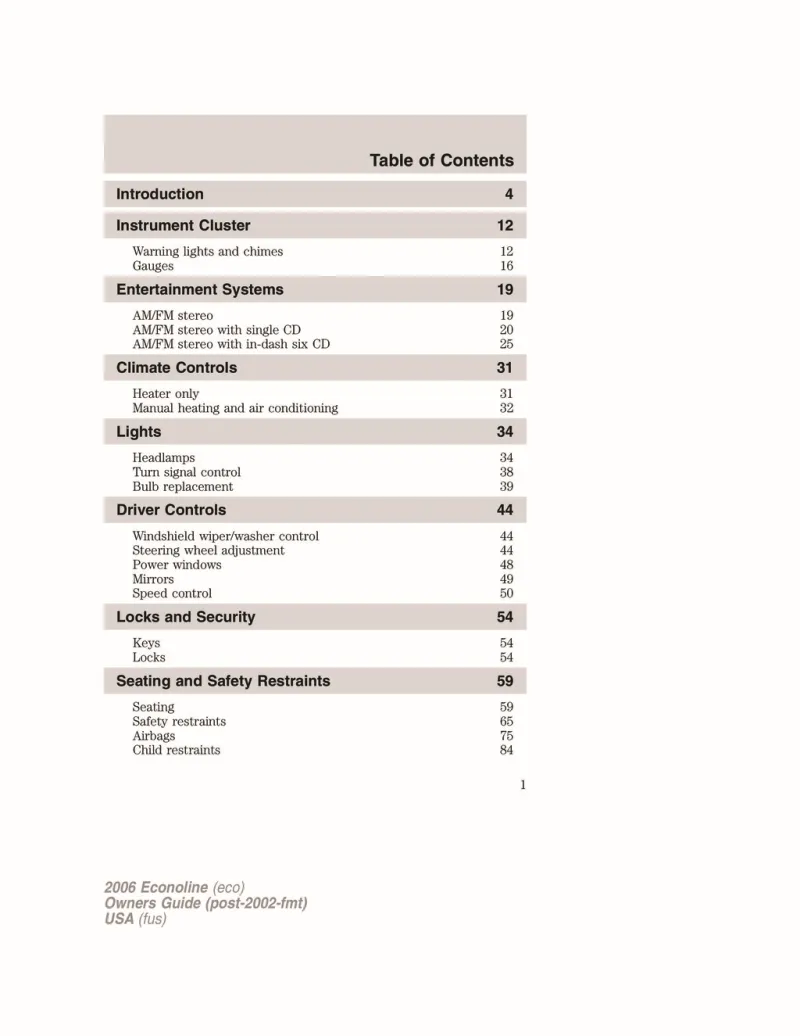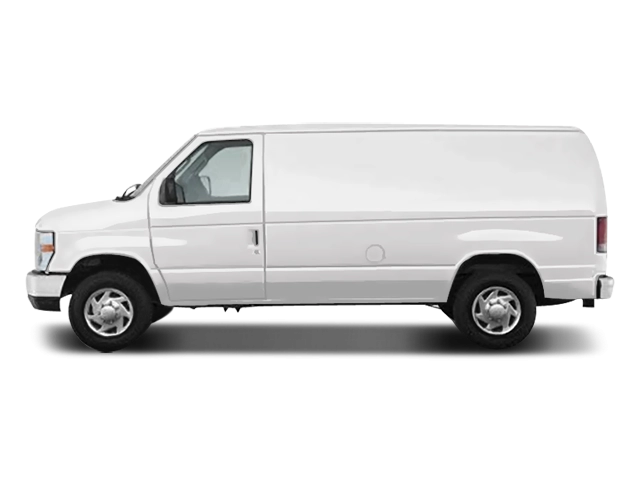2006 Ford E150 Owner's Manual

Table of Contents
2006 Ford E150 Overview
Introduction
The 2006 Ford E150 is a reliable and versatile full-size van designed for both commercial and personal use. Combining functionality with sturdy construction, this vehicle is ideal for transporting groups, carrying cargo, or serving as a foundation for customization. With ample interior space and a reputation for durability, the E150 continues to be a popular choice for businesses and families alike.
Powertrains
The 2006 Ford E150 comes equipped with a robust 4.6-liter V8 engine, delivering a confident 262 horsepower and 293 lb-ft of torque. This powerful engine offers impressive towing capacity, making it suitable for heavy loads. For those looking for even greater power, an optional 5.4-liter V8 engine provides 305 horsepower. Both engines are paired with a smooth-shifting four-speed automatic transmission that contributes to the overall driving experience, ensuring reliability and efficiency in various driving conditions.
Trims
Features
Inside the 2006 Ford E150, drivers will appreciate an array of thoughtful features designed for comfort and convenience. The spacious cabin accommodates up to 8 passengers, with generous legroom and headroom. Standard features include air conditioning, an AM/FM radio, and optional upgrades such as a CD player and premium sound system. Safety is also a priority, with the van equipped with anti-lock brakes, dual airbags, and available traction control.
Owners Manual
For current or prospective owners of the 2006 Ford E150, the owner’s manual serves as an invaluable resource. It provides comprehensive information regarding maintenance schedules, vehicle specifications, troubleshooting tips, and feature explanations. By following the guidelines in the manual, owners can ensure their E150 remains in top condition, thereby maximizing its lifespan and reliability for years to come.
User manual download
The Ford E150 owner manual for the 2006 model year is to be found in PDF downloadable format on this page. The owner manual for the model year 2006 is free and in English, but the repair manuals are usually not easy to get and may cost more.
Manual Questions
Fill the form below and someone will help you!

